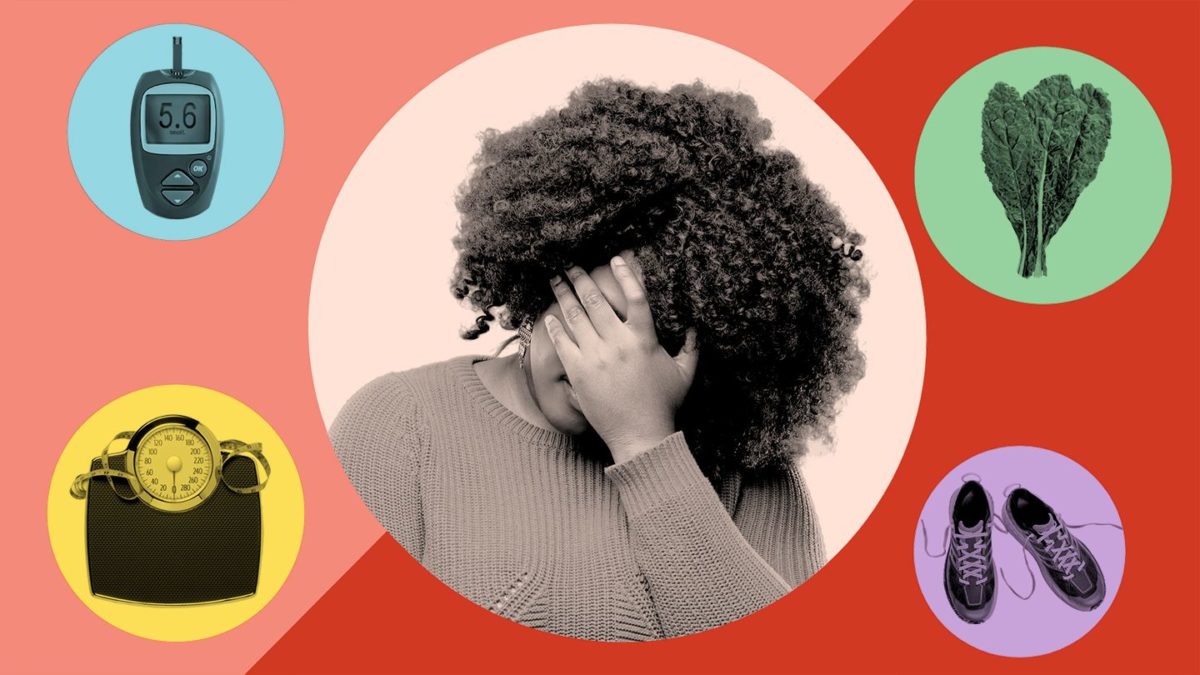Here’s how to get the diabetes support you need to manage your health and avoid diabetes burnout.
Learning you have diabetes can lead to a flood of emotions, both when you’re first diagnosed and as you manage your condition over time — all of which can lead to diabetes burnout — unless you have the right outlook and strong diabetes support.
Denial is a common reaction to being diagnosed with diabetes, explains Barbara Borcik, RD, LDN, CDE, of the Diabetes & Nutrition Center at Northwest Hospital in Randallstown, Md. “You might think of a host of reasons why the test results can’t be accurate,” she says. The problem with denial, Borcik says, is that it can get in the way of taking care of yourself. When test results show you have diabetes, your doctor may perform a second test on a different day to confirm. If the results are the same, she notes, “you may be a little more accepting and start to change how you take care of yourself.”
Guilt is another common reaction. “You might say to yourself, ‘If I hadn’t had a soda every day or a candy bar every afternoon, I wouldn’t have diabetes’” Borcik says. The truth is, diet isn’t the only risk factor, and feeling guilty shouldn’t be part of your get-better equation. You need to stay positive and face living with diabetes with an “I can do this” attitude.
Living With Diabetes: Building Diabetes Support
Living with diabetes isn’t as difficult as you might think, even if you need to make permanent lifestyle changes. Your doctor will work with you to develop a management plan to improve your health. Key components are a nutritious diet to reach and maintain a healthy weight, regular exercise, and possibly medication to keep your blood sugar under control. It’s also important to check your blood sugar often and visit your doctor regularly to monitor your condition and prevent complications. Think of all these steps as positive changes you’re making for better health.
Other strategies can also make living with diabetes easier to manage, both physically and emotionally:
Get educated. Learn all you can about living with diabetes, Borcik says. The more you know, the better you’ll cope. For instance, knowing trouble signs to watch for will take away some of the panic and confusion you might be feeling. If you use the Internet to research diabetes, she suggests accessing only sites that you know are reliable and up-to-date, such as the American Diabetes Association. Ask your doctor or diabetes educator for ways to keep up with treatment advances.
Get diabetes support. According to the National Institutes of Health and the Centers for Disease Control and Prevention, nearly 26 million Americans have diabetes. Networking with other people who are also managing diabetes can be both reassuring and helpful. “Realizing you’re not alone can help you stay positive,” Borcik says. Find support groups online or through your doctor or a diabetes educator.
Create a family network, too. Your family and friends often want to help you manage diabetes, but may not know how. Be specific about your needs — you might want a loved one to be with you at doctor appointments, or you might want to share nutritious recipes for healthier meals. “Friends and caregivers can help you problem-solve if you share your challenges with them,” says Laura Rooney, DNP, RN, CDE, who runs the Healthy Eating and Lifestyles Program, a self-management and education program for people with diabetes, for the School of Nursing at the University of Texas Health Science Center at Houston. Surround yourself with those who support you and minimize exposure to those who negatively impact your health.
Stick to your diabetes management plan. If you watch your diet, exercise regularly, and take any prescribed medications, you can control your diabetes. “When you control your blood sugar, you’ll feel better, and feeling better is a great motivator and mood lifter,” Borcik says. You’ll also sleep better, and that in turn can help you deal better with whatever life throws your way, she adds. Stay in touch with your doctor so you know your numbers — your glucose level, your A1C, your blood pressure, and your cholesterol count. Should they go above the levels that are right for you, look for possible causes and see what happens if you make changes. Your doctor may have additional suggestions for how to get your numbers back where they should be. Don’t delay — if you allow diabetes to get too far out of control, you may start to feel overwhelmed.
Don’t be too hard on yourself. Living with diabetes is a ‘round-the-clock reality, and you’re bound to slip up once in awhile. “Just get right back on track the next day,” Borcik says. Don’t let guilt get you down.
Be kind to yourself. “I always tell people, ‘Give yourself a break,’ ” Rooney says. Once in awhile it’s okay to have a small slice of birthday cake or some of Mom’s homemade candy — as long as it’s not a daily habit. Having a small, favorite indulgence every now and then will help you stay on track the rest of the time and prevent diabetes burnout. Also, reward yourself for small victories with treats other than food. Go to the movies, get a massage or facial, or meet a friend for a walk around the neighborhood or a game of golf.
Focus on the positive. “Lots of people with type 2 diabetes focus on what they can’t have rather than all the wonderful things they can have,” Rooney says. Adjusting your outlook can help you stay positive. When you see only the negatives, you sabotage your efforts to manage your condition. Focus on the control you do have over your health and the actions you can take to feel better.
A Note on Diabetes and Depression
Despite your best efforts, you might feel overwhelmed by your diabetes diagnosis and upset about the lifestyle changes you need to make. You may even become depressed. It’s important to get help for depression right away because it can start a dangerous downward spiral. People with diabetes who become depressed are less likely to take their medications regularly, putting them at increased risk for complications.
A study by researchers from the University of Pennsylvania published in the Annals of Family Medicine found that treating people for diabetes and depression simultaneously improved their ability to not only control their diabetes, but also their mood. When people received treatment for both diabetes and depression, the rate at which they had improved blood sugar tests almost doubled (61 percent for those who received combined care versus 36 percent for those who didn’t). The same was true for reduced symptoms of depression (58 percent showed improvement with combined care versus 31 percent without combined care).
Watch for the warning signs of depression. If you feel sad much of the time, overeat or don’t eat enough, notice changes in your sleep habits, or can’t concentrate at work, you may need counseling. Talk to your doctor about getting professional help.
Living with diabetes requires daily commitment, but educating yourself about this common condition and building a solid support network will help keep you healthy and emotionally strong.












